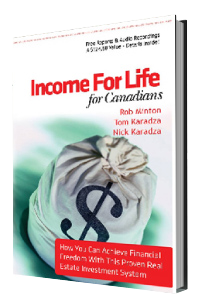Up-And-Coming Neighbourhoods
There’s definitely something
to be said about getting into a neighbourhood before prices get too high and
you can no longer afford it. Up-and-coming neighbourhoods can be great for
getting more bang for your buck, but you have to be careful when you look at an
up-and-coming neighbourhood. Is it quickly becoming the new hot spot to live,
or are you going to have to deal with high crime rates and a rough
neighbourhood for years to come? We stress the importance of
buying nice homes in nice areas, especially for our Rent to Own strategy. By
offering something desired you can ask for more rent, and help your
tenant-buyers realize their dream of becoming proud homeowners. If you’re familiar with our
Rent to Own strategy you know we only do these in starter homes (if you’re not
familiar with Rent to Own investing, you can read about it here). In any
economic cycle, there is one market that is always active, or most liquid, and
that’s the starter home market. We limit our search to starter homes in
communities that meet these three criteria: However, if you can’t buy in
these in-demand nice areas, you may be looking for something in an
up-and-coming neighbourhood. Many “rough” neighbourhoods get labeled as
“up-and-coming,” but it is important to know how long you’re going to have to
hold onto a property before the community has arrived at the “desired
community” status. Here are 13 signs a neighbourhood is on the rise. Some Cool Free Stuff... Step 1: Grab a free digital copy of our real estate investing book, Income For Life For Canadians, right here. This book has been downloaded over 22,597 times and has helped hundreds of investors kick-start their investing with simple and straight forward strategies that you can implement right here in Canada. You'll also receive our weekly [Your Life. Your Terms.] email newsletter with the latest investing updates and videos. Step 2: Free Weekly Investing Videos & Articles: Get the latest updates and join the over 10,000 other Canadians enjoying the weekly [Your Life. Your Terms.] email newsletter. The email is sent out each Thursday. And as a little bonus we'll give a FREE digital copy of the book, Income For Life For Canadians, too! Your Life. Your Terms. Step 3: Free LIVE Investing Class: Do you live in the Greater Toronto or Golden Horseshoe Area? Come out to our next introductory "Investing in Nice Homes in Nice Areas" Real Estate Class. It's 90-minutes and you'll learn a ton - promise!Thousands of investors have now joined us for this class and the feedback has always been amazing.
13 Trademarks of Up-and-Coming Neighbourhoods
If on-trend
businesses are moving in, you’re looking at a good neighbourhood. This could be
boutiques, nice restaurants, cafés, art galleries, etc.







